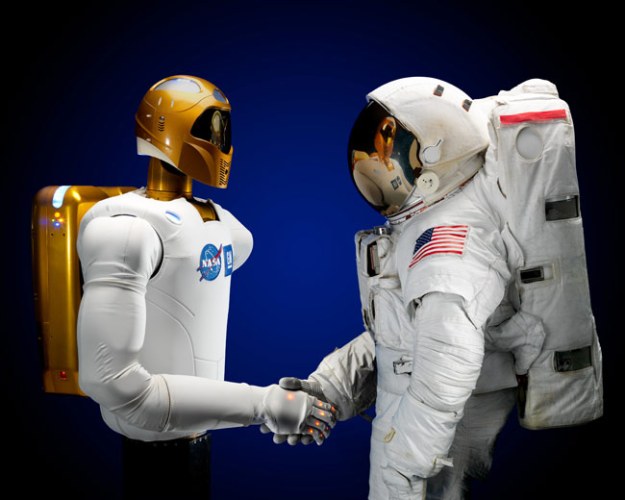 Late last year we told you about Robonaut 2, the humanoid robot intended to serve as an assistant to astronauts aboard the International Space Station. After making the trip to the space station several months ago aboard one of the final space shuttle missions, Robonaut 2 was finally activated this weeky and began transmitting data to Earth.
Late last year we told you about Robonaut 2, the humanoid robot intended to serve as an assistant to astronauts aboard the International Space Station. After making the trip to the space station several months ago aboard one of the final space shuttle missions, Robonaut 2 was finally activated this weeky and began transmitting data to Earth.
Developed as a joint project by NASA and General Motors, Robonaut 2 will spend the next few weeks undergoing tests conducted by the astronauts and the robot’s creators here on Earth. Upon activation, Robonaut 2 tweeted a photo of what it will be looking at for the foreseeable future: a jumble of wires, knobs, and monitors directly in front of its cameras.
(Okay, so we know Robonaut 2 doesn’t actually post to Twitter, but it’s more fun to think the robot is indeed tweeting from space.)
The $2.5 million robot is designed to serve as an assistant to the space station’s six-man crew, and is the first humanoid robot to fly in space. The end goal of the Robonaut project is to develop a robot helper that can assist in complex tasks regardless of environment.
Before you start worrying about Robonaut 2 conducting a mutiny, it’s worth noting that the robot is not a complete humanoid in its current configuration. While it has a head, torso, arms, and hands, it’s currently missing any legs or feet. Instead of legs, it requires an anchor pole to keep it in place.
Still, we should probably keep an eye on it — just in case it decides to trade info with MABEL, the running robot we reported on earlier this week. Those two should consider themselves officially on notice.
Editors' Recommendations
- Why the moon needs a space traffic control system
- Robots Everywhere: Robots in space exploration
- Watch SpaceX practice an emergency escape from its Crew Dragon capsule
- How to watch the SpaceX Dragon spacecraft depart the ISS today
- Watch the James Webb Space Telescope deploy its massive origami mirror




